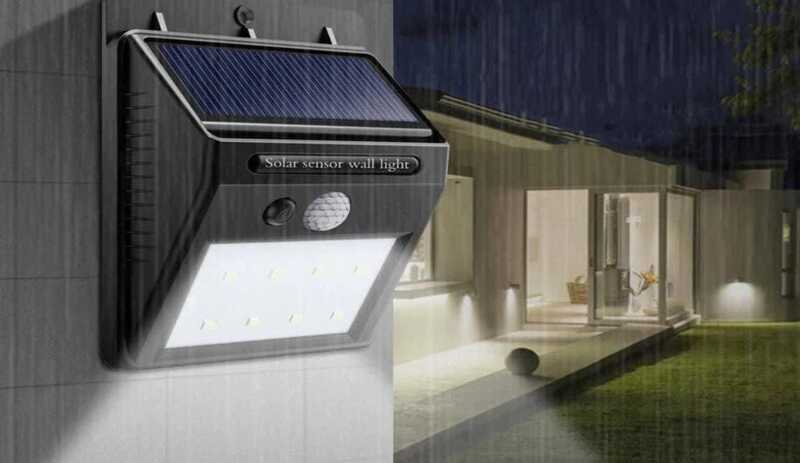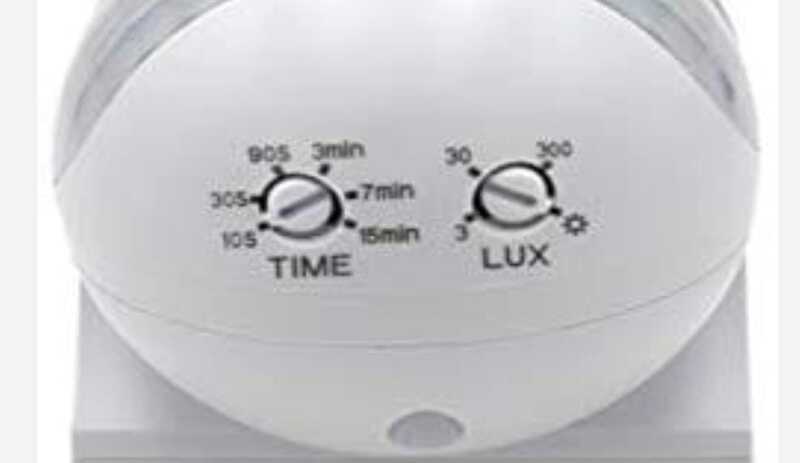In many homes and businesses, motion sensor lights are a common form of lighting. These lights are convenient because they automatically turn on when they detect motion, which saves energy and helps maintain security.
However, there are times when one may want the lights to remain on, such as when doing a task that requires constant illumination. Fortunately, there are ways on how to trick motion-sensing lights to stay on, either through hardware or software tricks.

In this article, we’ll explore the different techniques for how to trick motion sensor lights to stay on, their potential advantages and disadvantages, and how to troubleshoot common problems that may arise in the process.
What are motion sensors and how do they work?
Motion sensors are electronic devices that detect motion in their field of view. These sensors work using different technologies, such as infrared or microwave.
In order to define how to trick motion sensor lights to stay on, we must first verify how exactly motion sensors work. The most common motion sensors use infrared and work by detecting the infrared radiation emitted by objects in their field of view. When someone or something moves in the sensor’s field of view, the infrared radiation changes and the sensor sends a signal to the lighting system to turn on the lights.
Motion sensors can also have settings to control sensitivity, illumination duration and detection range. This means they can be customized to suit the needs of each specific situation.
In general, motion sensors are a popular choice for outdoor and indoor lighting, as they help save energy and increase security.
Why do some people want to trick motion sensor lights to stay on?
There are several reasons why someone might feel the need to know how to trick motion sensor lights to stay on. Here are some of the most common reasons:
Performing detailed tasks:
Motion-sensing lights can turn off unexpectedly if you don’t move enough, which can be frustrating if you are performing a detailed task that requires constant illumination.
Avoid safety issues:
In some cases, motion-sensing lights may turn off while someone is still in the area, which could result in injury if the space is not well lit.
Avoiding inconvenience to others:
If someone has to continually exit and enter a space, such as a room with a motion sensor, it can be annoying to others if the lights are constantly turning on and off.
Lighting control:
Some people prefer to have more control over the lighting in a space and prefer to have the lights remain on as they please.
Common tricks to fool motion sensor lights, including hardware and software methods.
There are several tricks for tricking motion sensor lights to stay on. Some methods involve the use of hardware and others involve the use of software.
One of the simplest methods is to move the sensor so that it does not have a clear line of sight. This can be accomplished by placing an opaque object in front of the sensor, such as tape or a piece of paper, or by moving the sensor to an angle where it cannot easily detect motion.

Another method is to install a light switch that can override the motion sensor. This will allow the lights to remain on until the switch is turned off again.
In addition, some motion sensors have a timer setting that can be set to keep the lights on longer. Setting the timer to a longer duration can allow the lights to stay on longer before automatically turning off.

On the other hand, if a smart lighting system is being used, software applications can be used to control the lights and prevent them from turning off automatically. This can be achieved by using lighting control applications that allow you to customize the lighting duration and sensor sensitivity.
There are various tricks to fool motion sensor lights into staying on. Hardware and software methods can be useful, depending on the needs and type of lighting system being used. It is important to remember that cheating motion-sensor lights can consume more energy and reduce the life of the bulbs, so it is important to consider the potential side effects before using any method.
What are the environmental and energy saving implications of tricking motion sensor lights?
Tricking motion-sensor lights into staying on can have significant environmental and energy-saving implications. In general, motion sensor lights are designed to reduce energy consumption by turning on only when motion is detected and automatically turning off after a period of time with no activity. By tricking these lights into staying on, more energy is consumed and the energy efficiency of the lighting system is reduced.
This can have an impact on the environment by increasing the amount of energy used for lighting, which in turn increases greenhouse gas emissions and contributes to climate change. In addition, excessive energy consumption can also have an economic impact in terms of increased energy costs for the home or business.
Therefore, it is important to consider the environmental and energy saving implications before tricking motion sensor lights into staying on. While there may be circumstances where it is necessary to keep lights on longer, it is important to strike a balance between the need for illumination and energy conservation. This can be achieved by using efficient lighting techniques, such as selecting energy-efficient LED bulbs and installing ambient light sensors that automatically adjust the intensity of the lighting as needed.
Are there any disadvantages to cheating on motion sensor lights?
Yes, there are several disadvantages to tricking motion sensor lights into staying on. First, as I mentioned earlier, cheating on motion sensor lights can increase energy consumption and decrease the energy efficiency of the lighting system. This can have a significant environmental impact by increasing greenhouse gas emissions and contributing to climate change, as well as an economic impact by increasing energy costs for the home or business.
Second, the deception of motion sensor lights can also reduce the life of light bulbs and lighting equipment. When lights remain on for extended periods of time, the temperature of the bulb and fixture components can increase, which can shorten their lifespan.
Finally, cheating on motion sensor lights can also be a violation of safety regulations or standards. Motion sensor lights are often installed in locations where constant illumination is required to ensure safety, such as hallways, stairwells and work areas. By tricking these lights into staying on, a safety hazard can be created by reducing visibility and the ability to respond to emergency situations.
Tips for troubleshooting common problems when trying to fool motion sensor lights.
Here are some possible solutions to common problems that can arise when trying to fool motion sensor lights:
Lights not turning on:
Make sure it is dark outside, as many motion sensor lights only activate in the dark. Also check that the power supply is working properly and that the motion sensor is not obstructed by something blocking motion detection.
Lights that go out too quickly:
Some motion sensor lights are designed to turn off after a certain period of time if they no longer detect motion. To avoid this, try moving closer to the light or adjusting the timer in the light’s settings.
Lights that turn on, but do not turn off:
It is possible that the motion sensor is faulty or is receiving a constant signal of motion due to something like rain or wind. Make sure the area is clear of obstructions that could trigger the sensor and if the problem persists, you may need to replace the unit.
Lights that are constantly activating:
This may be due to sources of motion in the area, such as animals, moving trees, or nearby traffic. If you cannot eliminate the motion source, you can adjust the sensitivity of the motion sensor or adjust the position of the light to prevent the motion source from triggering the sensor.
It is important to keep in mind that most motion sensor lights are designed to improve the security and energy efficiency of your home or workplace. Any attempt to tamper with or sabotage these systems may be dangerous and/or illegal and is not recommended or approved for use.

